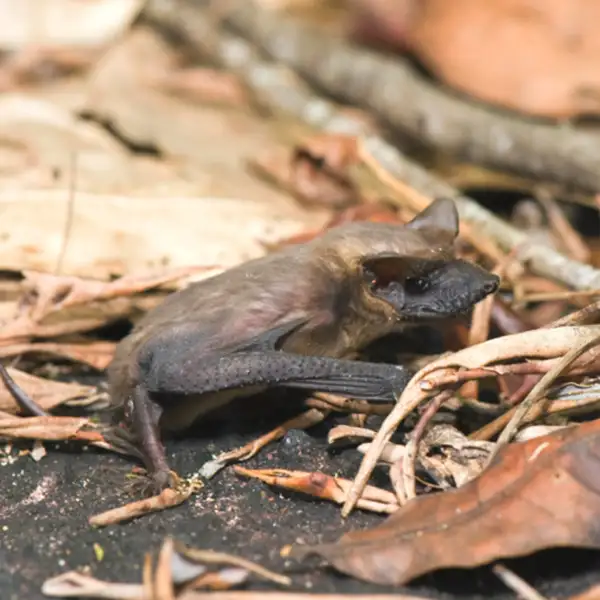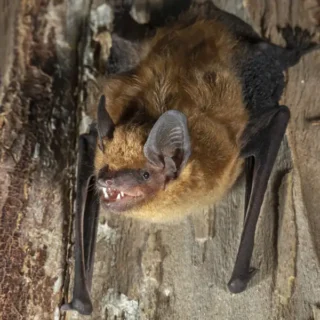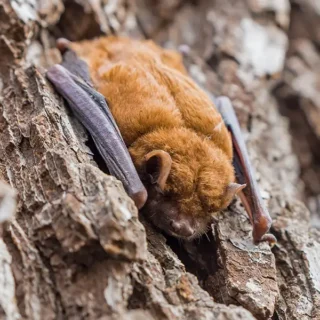Mexican Free-Tailed Bat in Virginia
Known for their enormous colony sizes, Mexican free-tailed bats can gather in the millions! Their name comes from their long tails, which stretch beyond their tail membranes. These bats are incredibly fast in flight, possibly holding the record for the fastest horizontal speed. They are often seen darting through the sky at dusk in search of food. Their large ears enhance their ability to locate prey using echolocation.
Mexican Free-Tailed Bat Habitat
Mexican free-tailed bats reside in the southern U.S., heading south to hibernate in winter. While they favor caves for roosting, they are also infamous for settling in buildings with dark ceiling spaces or wall cavities. Their adaptability allows them to thrive in urban environments, often coexisting with human structures. Some even seek out man-made structures near water, ensuring a steady supply of their preferred insect diet.
Mexican Free-Tailed Bat Behaviors, Threats or Dangers
Flying at record-high altitudes, these bats hunt insects in the air and feed after nightfall. They depend on echolocation to navigate and track their prey. The real danger they pose comes from their massive colonies, which can be hazardous if they settle inside buildings. Their droppings, or guano, can accumulate quickly, leading to structural damage and health risks. If a bat finds its way indoors, avoid any direct contact and seek professional assistance.
If you’re dealing with a bat infestation, it’s best to reach out to a wildlife control expert.



